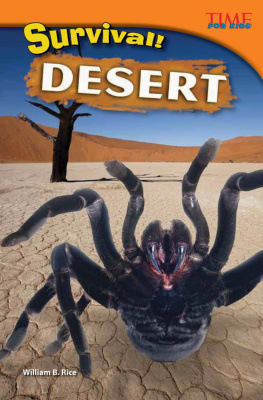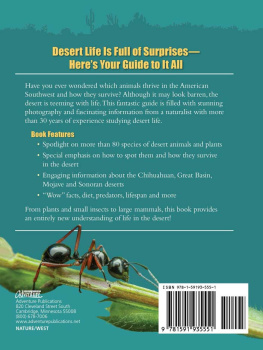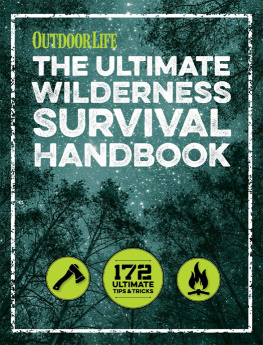WARNING!
The instructions in this book are for extreme survival situations only. Always proceed with caution, and ask an adult to supervise or ideally, seek professional help. If in doubt, consult a responsible adult.
Published 2016 by Bloomsbury Publishing Plc
50 Bedford Square, London, WC1B 3DP
www.bloomsbury.com
epub ISBN-13: 978-1-4729-1545-0
Bloomsbury is a registered trademark of Bloomsbury Publishing Plc
Copyright 2016 Bloomsbury Publishing Plc
Text copyright 2016 Tracey Turner
Illustration copyright 2016 Nelson Evergreen
Additional illustrations Shutterstock
The rights of Tracey Turner and Nelson Evergreen to be identified as the author and illustrator of this work have been asserted by them in accordance with the Copyrights, Designs and Patents Act 1988.
A CIP catalogue for this book is available from the British Library.
All rights reserved.
No part of this publication may be reproduced in any form or by any means graphic, electronic or mechanical, including photocopying, recording, taping or information storage and retrieval systems without prior permission in writing of the publisher.
To find out more about our authors and books visit www.bloomsbury.com . Here you will find extracts, author interviews, details of forthcoming events and the option to sign up for our newsletters .



Contents
Welcome to an action-packed adventure in which you take the starring role!
Youre about to enter the Ngorongoro Crater in Tanzania, breathtakingly beautiful and teeming with dangerous African wildlife. On each page choose from different options according to your instincts, knowledge and intelligence and make your own path across the crater to safety.
You decide...
How to escape a charging bull elephant
What to do when you come face to face with a deadly snake
How to understand monkey alarm calls
... and many more life-or-death dilemmas. Along the way youll discover the facts you need to help you survive.
Your adventure starts on the
Its time to test your survival skills or die trying!
Y ouve taken a moment to be by yourself while the rest of your group crowds around the jeep, listening to the guides lion-attack story. Their voices fade into the background as you look across the crater. It shimmers in the early morning haze. Standing in the middle of the crater, you can see some zebra in the distance, and far beyond them the craters rim looks green and lush.
The roar of an engine brings you out of your daydream. You turn and see that the jeep is driving away! You call out as loudly as you can, but its no good. The engine drowns you out. All you can see now is just a far-away cloud of dust as the jeep speeds away. Your heart pounds violently as you realise whats happened.
This African trip was the prize for winning a national schools competition, and youre here with a group of 25 other prizewinners that you havent really got to know yet. Today, the friend youre teamed with wasnt well and had to stay at the campsite. Without her to raise the alarm, everyone else must have forgotten you. Maybe the guide thought that youd stayed behind too.
A long, low roar echoes across the crater, chilling your blood. You are completely lost, and, for the moment at least, alone.
With no other options, you shoulder your backpack and set off in the direction the jeep headed.
How will you survive?
Turn to the to find information you need to help you survive.
Y ou are stranded in the Ngorongoro Crater in Tanzania, East Africa. The crater covers about 300 square kilometres, and is part of the 8,300-square-kilometre Ngorongoro Conservation Area. This includes plains, ravines, lakes, forests, and highlands on the western edge of the Great Rift Valley.
Explosive Past
The Ngorongoro Crater is whats left of a huge volcano that erupted 2.5 million years ago. The enormous explosion left a 600 metre deep crater (actually a caldera, a collapsed volcanos cone) 19 kilometres across, which is now the biggest unbroken and unflooded caldera in the world. Its rich grassland and water sources attract many different creatures.
Crater Animals
The craters grassland, swamps, forests and freshwater make it home to between 25,000 and 30,000 large mammals. Grazing animals include wildebeest, zebra, gazelle, buffalo, warthogs, hippos, rare black rhinos, and elephants. Ostriches stalk the plains, flamingos swoop in to visit the alkaline Lake Magadi, and eagles, vultures, buzzards, and hawks circle above the crater. The crater also contains the highest concentration of predatory animals in Africa. There are lions, cheetahs, hyenas, jackals, and leopards. Needless to say, all of the meat-eating animals, and some of the plant-eating ones, can be very dangerous.
Wildlife Watching
All of this amazing wildlife attracts another kind of animal: human beings. People come to the Ngorongoro Crater for safaris, especially since its one of the few places in the world where endangered black rhinos breed. The number of safari vehicles is strictly limited, and they have to leave the crater by six oclock in the evening, giving the animals the night to themselves. The dry season, from June to October, is the most popular time for visitors to the crater.
Ngorongoro People
The Maasai people live in the Ngorongoro Conservation Area. They manage herds of cattle, sheep and goats, and move with their herds in search of grass and water. The Maasai also live in other parts of northern Tanzania and across the border in Kenya (see for more information on the Maasai).

Turn to the .
You have come to the Ngorongoro Crater in October, which is a warm time of year but perhaps not as hot as you might think, especially in the early morning. The floor of the crater is much warmer than the sides. Luckily, youre wearing good walking boots and lightweight layers of clothing, which you can take off and put into your backpack as you warm up.
Its also lucky that you have a two-litre bottle of drinking water in your backpack. Because you are in such a dangerous territory, finding water isnt a priority its more important for you to get out before nightfall!
As youre probably aware, there are animals in the crater that can easily kill you. Approach any animal with caution, even if you dont think its dangerous, and always keep your distance.
A predator is more likely to see you as prey if youre running away from it. Its likely response will be to chase you.
Large carnivores arent your only worry: look out for smaller dangerous creatures too, and remember that some plant-eating animals can kill people.
You will have to find a way to stop yourself from panicking. You are in an extremely dangerous situation, but panicking will lead you to make bad decisions. Its possible to survive if youre thinking clearly with a bit of luck!
Turn to the .













